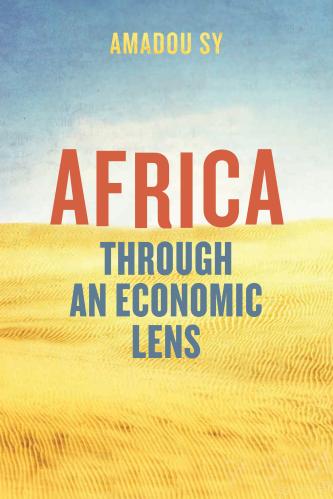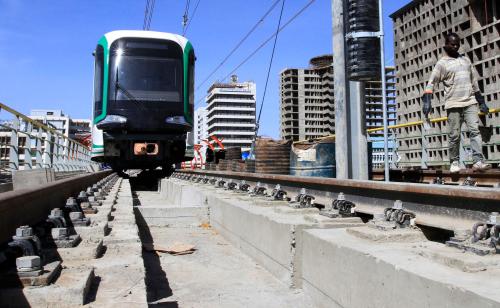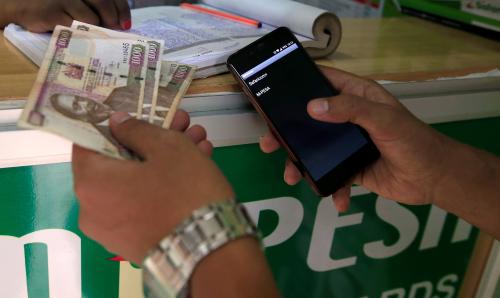Sub-Saharan Africa has become the global leader in mobile money adoption, usage, and innovation. The challenge now is to go beyond the success in payments to meet the unmet demand in the region for other, underdeveloped financial services that can facilitate the digitalization of other segments of the economy. In a new report, my colleagues and I take a closer look at the policy challenges that need to be addressed to go up the value chain of financial technology (fintech) in Africa.
Sub-Saharan Africa leads the world in both per capita registered and active mobile money accounts, mobile money outlets, and volume of mobile money transactions. The region is also home to countries with the fastest growth in mobile money. Indeed, the number of mobile money accounts in sub-Saharan Africa has now surpassed bank accounts. Although most transactions are used to send and receive domestic remittances, transactions are increasingly being used for domestic transfers such as paying utility bills, receiving wages, and paying for goods and services.
Fintech providers are leveraging their experience and large customer base in payments services to provide other financial services, especially across borders. In response to the large unmet demand for credit services, cross-border payments, investment products, and insurance services on the continent, innovators are introducing new types of financial products to fill the gap. Kenya’s mobile network operators partnering with banks have led the way in innovations offering access to formal savings, loan, and insurance products such as Safaricom’s M-Shwari and KCB M-Pesa. Similarly, Simbapay and Kenya’s Family Bank recently launched an instant payment service connecting East Africa to China. A new crowd-funding platform by Kiva and Zoona in southern Africa gives individuals around the world the opportunity to offer small loans to entrepreneurs. EasyEquities in South Africa allows investment in “fractions of shares” (fractional share rights), which reduces barriers like high costs and product complexity, in a variety of products (such as equities and exchange-traded funds) using a low-cost platform.
African countries have also developed or are exploring solutions in regulatory and supervisory technology. The National Bank of Rwanda uses an electronic data warehouse to automate and streamline reporting processes for the supervision of more than 600 financial institutions, including banks, microfinance institutions, and savings and credit cooperative organizations. Data can be automatically pulled every 24 hours or even every 15 minutes in the case of mobile money and money transfer operators. Project Khokha—initiated by the South African Reserve Bank (SARB)—is a proof of concept that simulated a “real-world” trial of a distributed ledger technology (DLT)-based wholesale payment system using a tokenized South African rand.
Fintech is emerging as a technological enabler for the digital economy, complementing nonfinancial technologies and setting the path for the development of a region-wide digital economy. Several sectors in Africa such as agriculture, health, infrastructure, land registration, and tax collection are now benefiting from digitalization (see the report for more details).
Despite these current and potential innovative uses, uncertainty around the ultimate impact of fintech persists, especially given the rapid adoption of this and related technology. Efficiency considerations include choices regarding competition and coordination (as in the case of whether to push for interoperability), the impact on business models and profitability, and cost and inclusion issues. Policymakers will also have to manage risks to stability and security (including cyber-risk), financial integrity, and consider impacts on monetary policy implementation and transmission as well as financial stability issues.
Recommendations for getting the most out of fintech
First, policymakers need to fill the large existing hard infrastructure gap in the region, establish an appropriate mix of energy sources to generate electricity, and improve the governance of public utilities to ensure an adequate provision of electricity and internet services. To do so they will need to complement their scarce public resources with domestic and foreign private financing as well as concessional resources. In turn, policymakers will need to mitigate the risks associated with investing in infrastructure projects in their countries. In a recent report, the World Bank estimates that investment needs for the power sector in low- and middle-income countries over 2015-2030 range from 0.9 percent to 3 percent of GDP annually, depending on the desired level and quality of service and the technologies deployed. Policymakers in the region need to mobilize the financing needed to invest in electricity generation, transmission, and distribution, as well as in the critical internet infrastructure and the hardware and software systems infrastructure necessary to provide internet services such as fiber-optic links. Investment costs are also only one part of the accessibility challenge: Operations and maintenance, not just construction, must be included in budgets to ensure the reliability and affordability of electricity.
Second, policymakers need to address the perennial race between fast-moving innovation and the slow pace of regulation. There is a trade-off between catalyzing and supporting rapid innovation and taking the time to identify and manage associated risks in order to ensure financial stability and integrity. Given fintech’s rapid evolutionary pace in sub-Saharan Africa, regulators are currently struggling to do so. As they do catch up, they need to be flexible enough not to stifle innovation. Since sub-Saharan Africa is dominated by small value payments, proportionality—the balancing of risks and benefits against costs of regulation and supervision—is important. Regulators should thus focus on specific challenges such as price and financial stability, consumer protection from fraud, cyber-risks, and low financial literacy. Regulatory sandboxes could be a useful approach to follow if tailored to different objectives, legal structures, and levels of financial development. In the areas of anti-money laundering and countering terrorist financing, efforts to ensure appropriate identification are needed.
Third, policymakers need to consider fintech’s impact on employment and productivity, the digital economy, and, more broadly, much-needed structural transformation of their economies. Policymakers must elaborate policies that can leverage human capital, such as improving financial and digital inclusion and ensuring the adequate provision of financing to new sectors. For instance, appropriate education policies should include financial literacy and skills upgrading. Policymakers need a forward-looking approach to identify the type of future jobs that will be needed in a digital economy and provide the relevant skills and education. Similarly, they will need to assess how competition in different sectors will affect the landscape of a future e-economy (see Tirole 2017).
Note: This blog reflects the views of the authors only and does not reflect the views of the Africa Growth Initiative.








Commentary
Beyond mobile payments: Going up the value chain of fintech in Africa
May 20, 2019